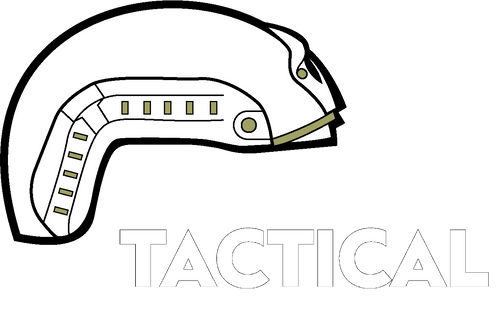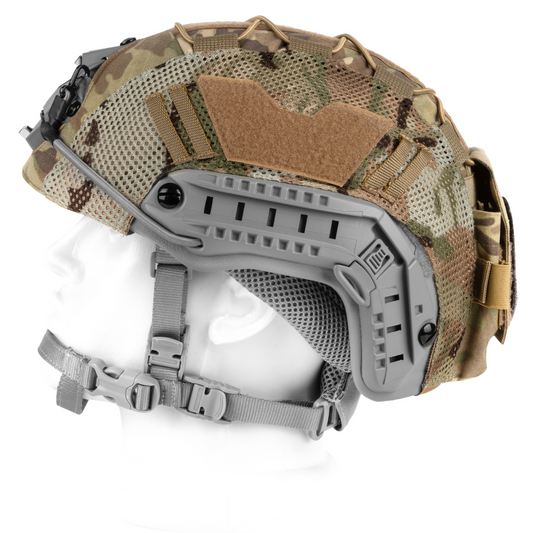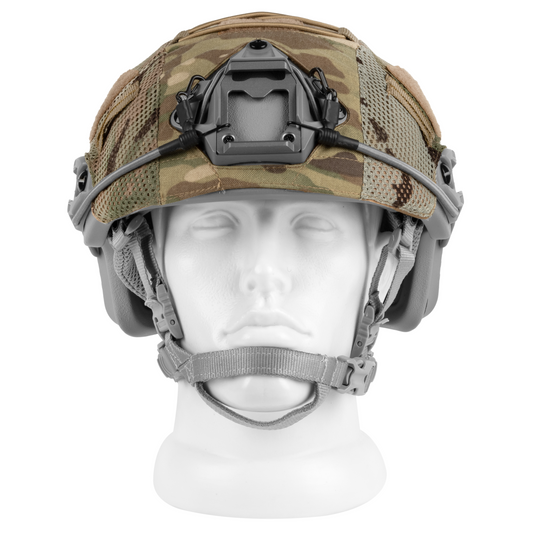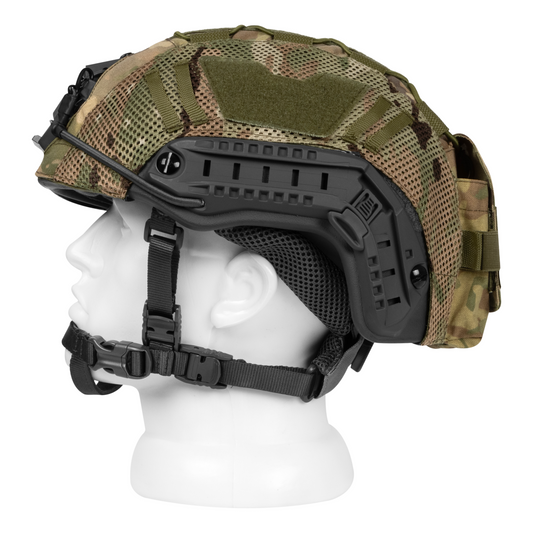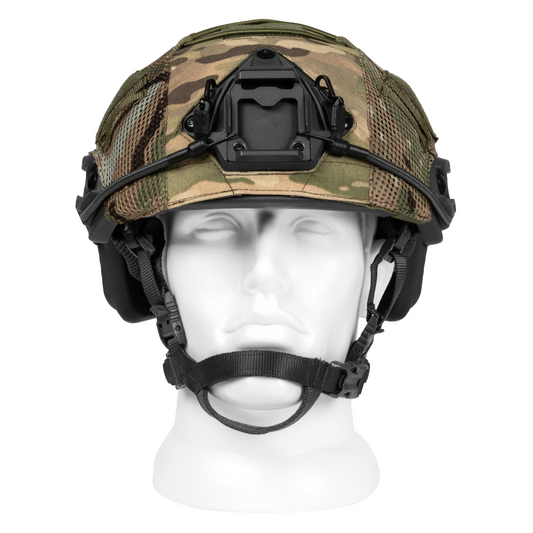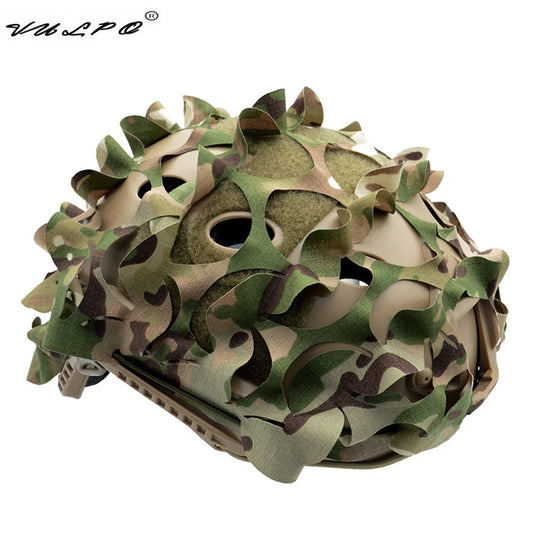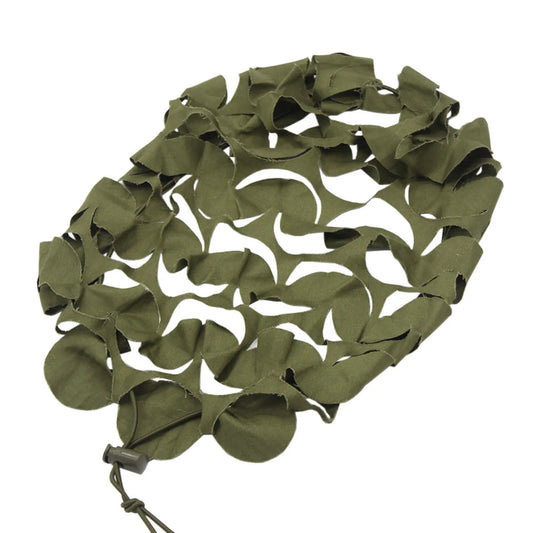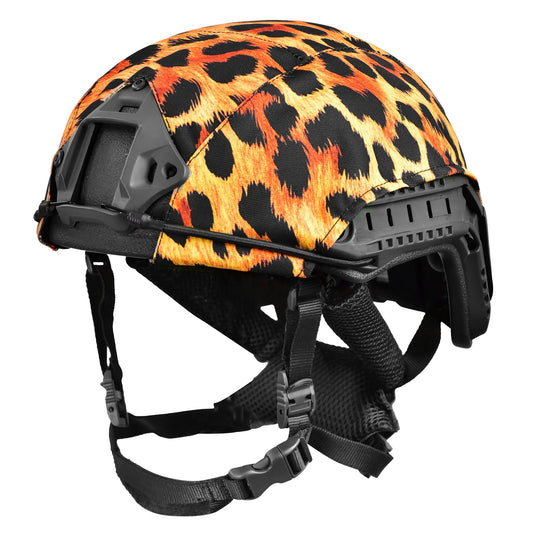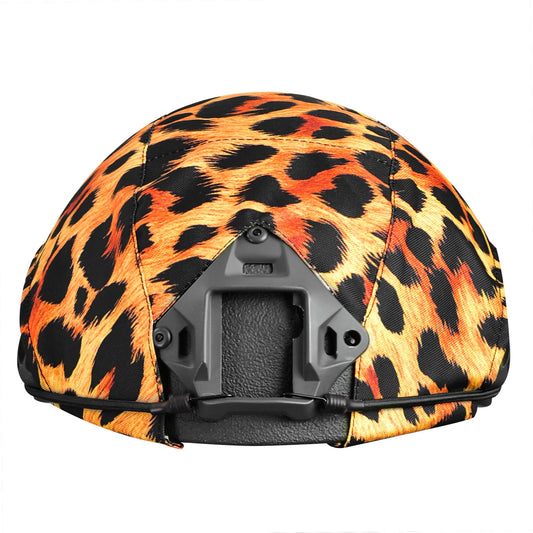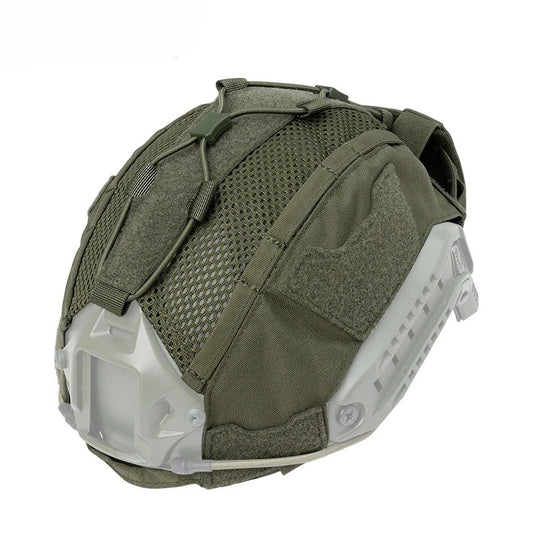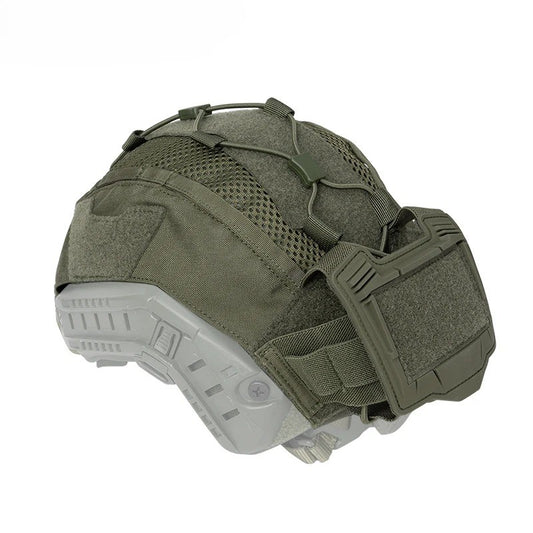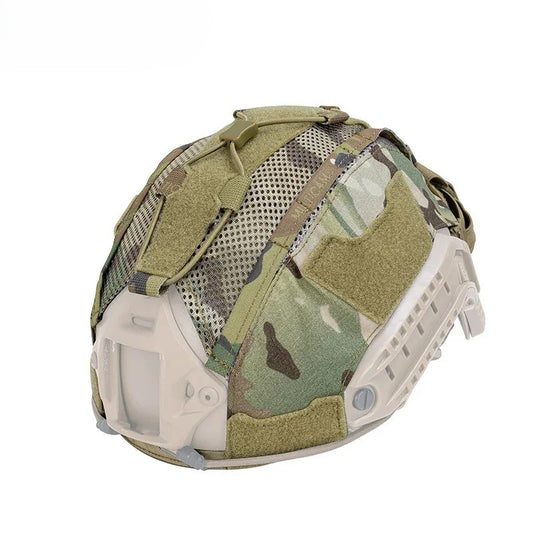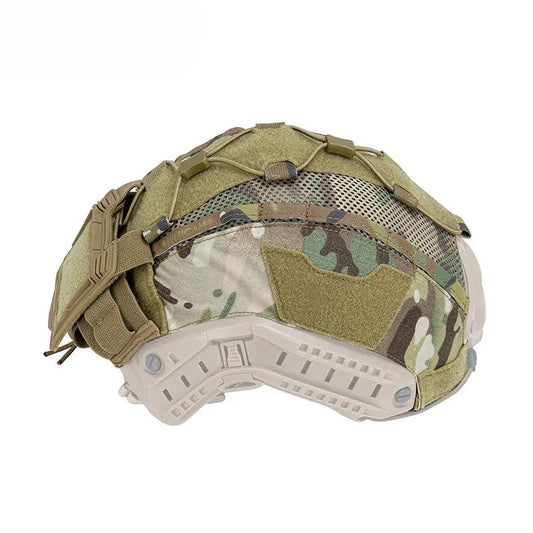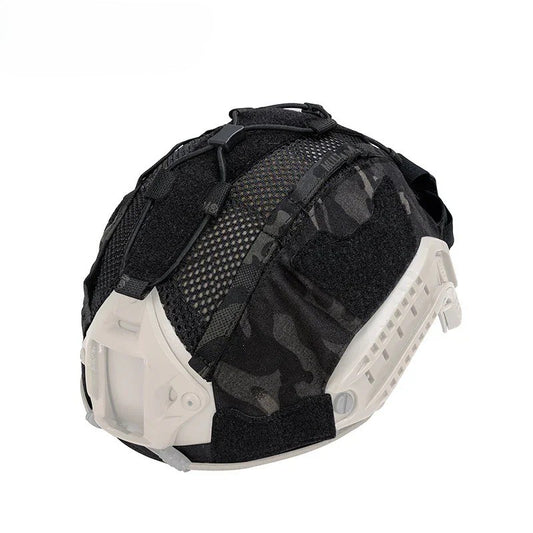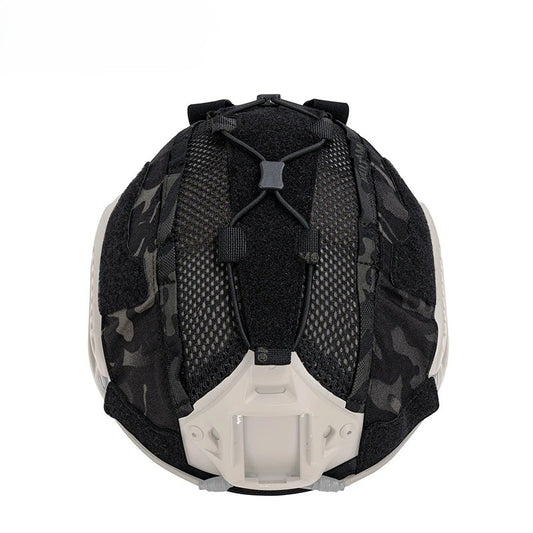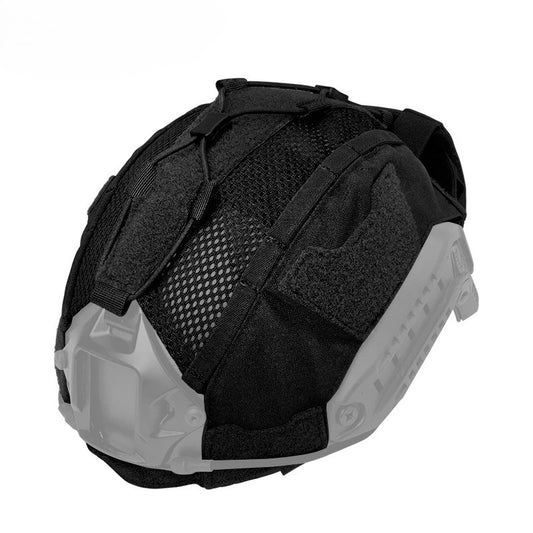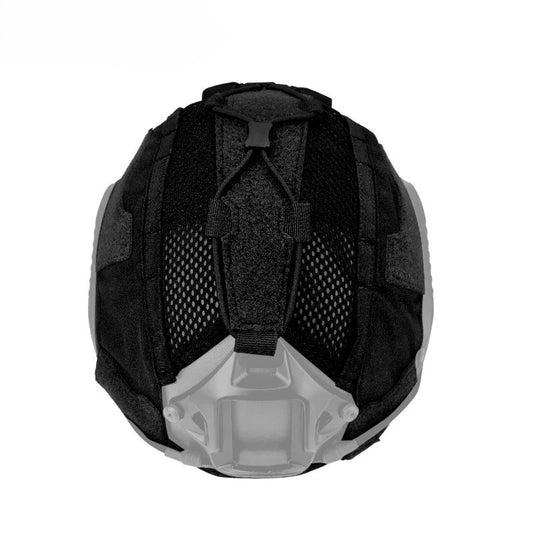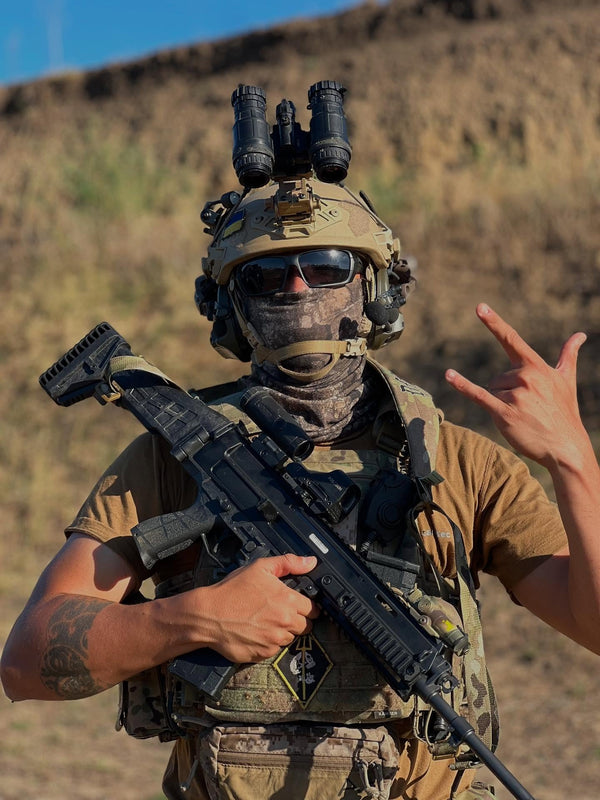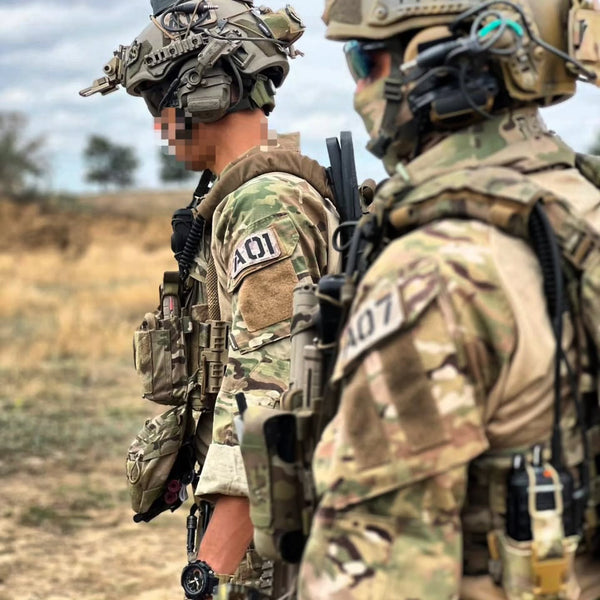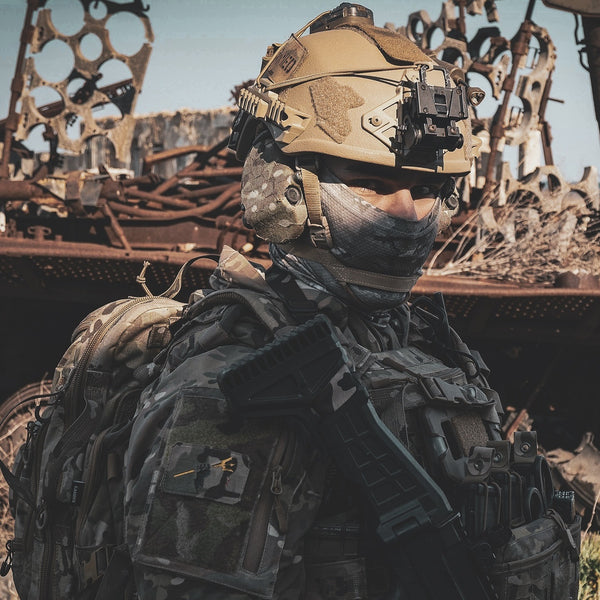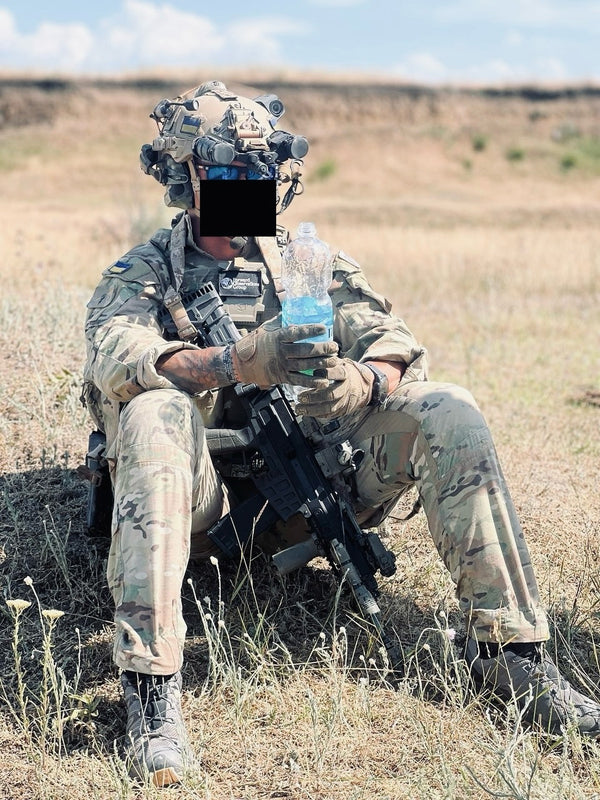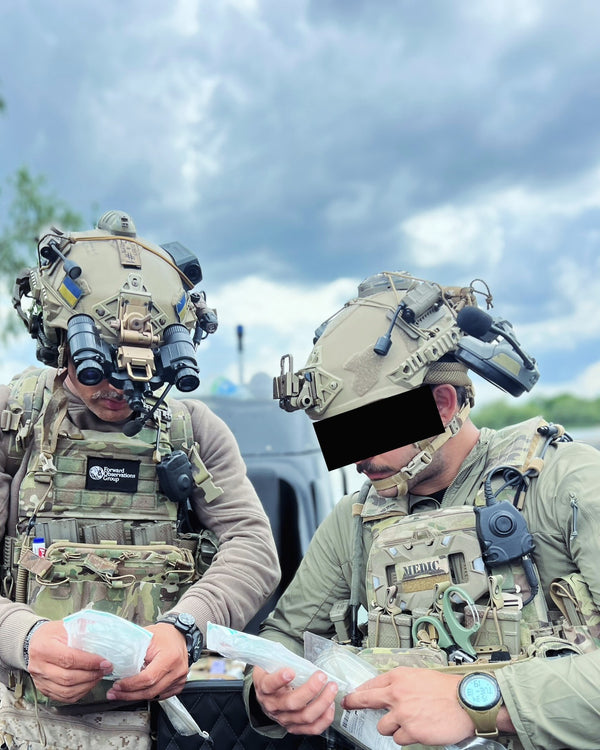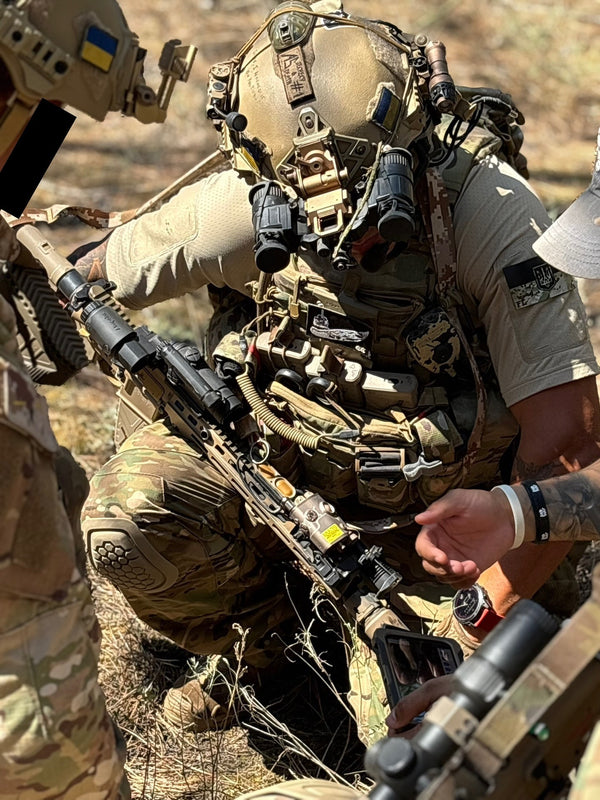Why Use a Helmet Cover?
A helmet cover is more than a cosmetic accessory. For military, law enforcement, and even airsoft or paintball players, it provides camouflage, noise reduction, surface protection, and extended helmet life.
Most high-quality helmet covers weigh between 5–7 oz (140–200 g) and are made from Cordura 500D/1000D or ripstop nylon, ensuring resistance to abrasion, water, and harsh environments.
Core Functions of a Helmet Cover
The role of a tactical helmet cover goes beyond looks:
- Camouflage — blends the helmet into woodland, desert, or urban environments.
- Noise reduction — minimizes metallic sounds and prevents unwanted reflections.
- Helmet protection — shields the shell from scratches, dust, and light impacts.
- Accessory management — some covers include Velcro panels for patches, strobes, or IR markers.
These functions make helmet covers indispensable for both professionals and enthusiasts.
Military Helmet Covers: Design and Compatibility
A good military helmet cover must fit securely across multiple helmet models (FAST, ACH, MICH, Exfil). Elastic bungees, reinforced Velcro, and MOLLE webbing ensure stability even in intense movement.
Whether for a ballistic helmet or a replica for training, a well-designed cover improves concealment and operational performance.
Materials and Camo Patterns
Helmet covers are typically built from Cordura nylon or polyester ripstop, with water-resistant coatings and reinforced stitching.
Popular camouflage and solid options include:
- Woodland and Multicam
- Desert and Arid patterns
- Ranger Green, Black, Coyote Tan
- Urban digital and specialized prints
These allow adaptation to forests, deserts, or city operations.
Types of Helmet Covers
Different missions require different helmet cover setups. Each option strikes a balance between durability, weight, and cost, so the right choice depends on operational needs.
Ballistic Helmet Cover
Designed for maximum durability, ballistic helmet covers are typically made from Cordura® 1000D with reinforced stitching. They weigh about 7 oz (200 g) and are compatible with NIJ IIIA-rated helmets, including FAST and ACH models. These covers are primarily recommended for military and law enforcement operations where ruggedness and reliability are essential. Prices usually range between $50 and $80.
Tactical Helmet Cover
A lighter alternative, the tactical helmet cover is constructed from Cordura® 500D combined with ripstop nylon. Weighing approximately 5 oz (140 g), it is compatible with FAST and MICH helmets. Its durability makes it ideal for police use, intervention units, and training scenarios where versatility is required. Pricing falls within the $40 to $65 range.
Airsoft/Replica Helmet Cover
For recreational users, the airsoft or replica helmet cover offers a lightweight solution. Built from polyester, it weighs around 4 oz (115 g) and is designed for replica helmets. It is widely used in airsoft, paintball, and other recreational activities where ballistic protection is not required. This option is the most affordable, with prices typically between $20 and $35.
In summary, ballistic helmet covers are suited for professional high-risk missions, tactical covers balance durability and training needs, while replica covers provide accessible options for recreational use.
Comparison: Ballistic vs Tactical Covers
- Ballistic helmet covers → thicker, reinforced, built for combat helmets with ballistic certification.
- Tactical/utility covers → lighter, optimized for flexibility and fast team deployments.
- Airsoft covers → inexpensive, not protective, but ideal for training and immersive gameplay.
Maintenance Tips for Helmet Covers
Proper maintenance extends the service life of your cover:
- Wash with mild detergent in lukewarm water, air dry only.
- Avoid prolonged direct sunlight, which can fade camo colors
- Inspect reinforced areas for wear and repair promptly.
Some models include reinforced panels for easier patching in the field.
How to Choose the Right Helmet Cover
When selecting a helmet cover, consider:
- Protection level — ballistic covers for combat, tactical covers for training or policing.
- Camo type — match the environment: woodland, desert, or urban.
- Compatibility — check the fit with your specific helmet model.
- Durability — Cordura 1000D for combat, lighter ripstop for mobility.
A correct match extends helmet lifespan and improves both camouflage and operational

